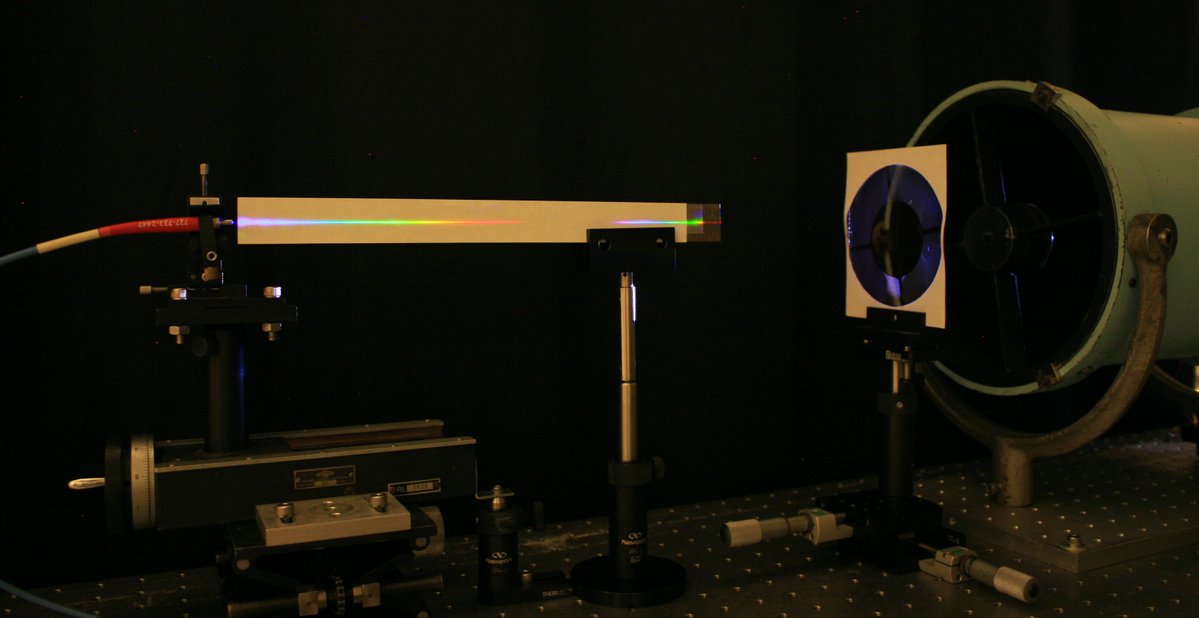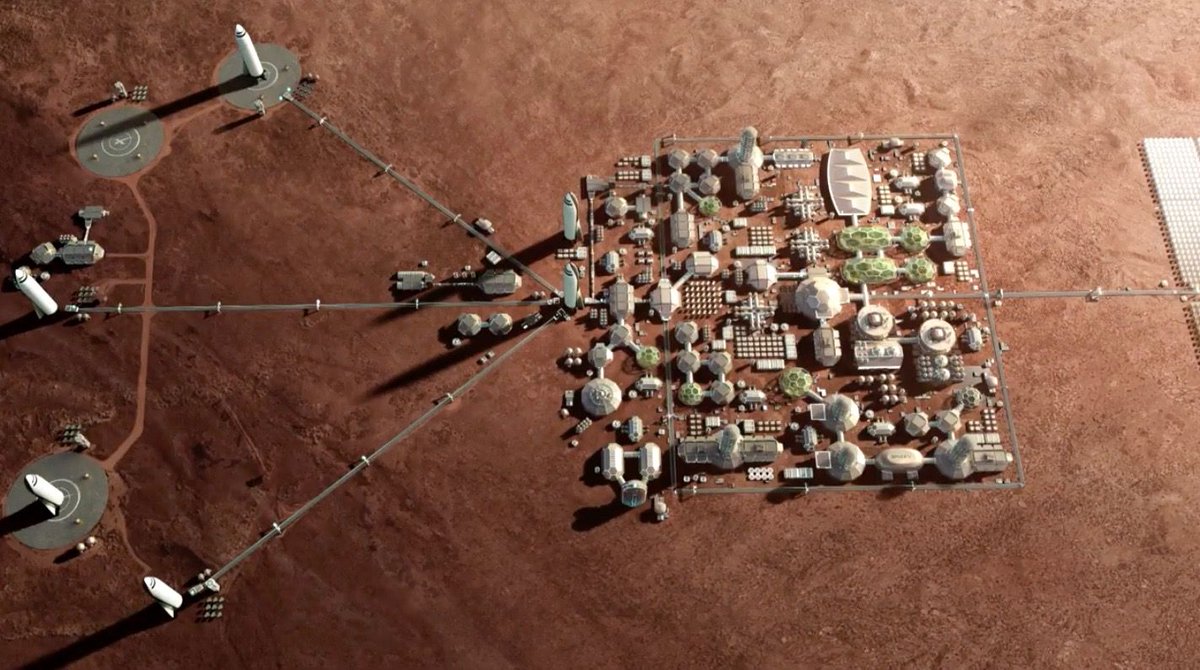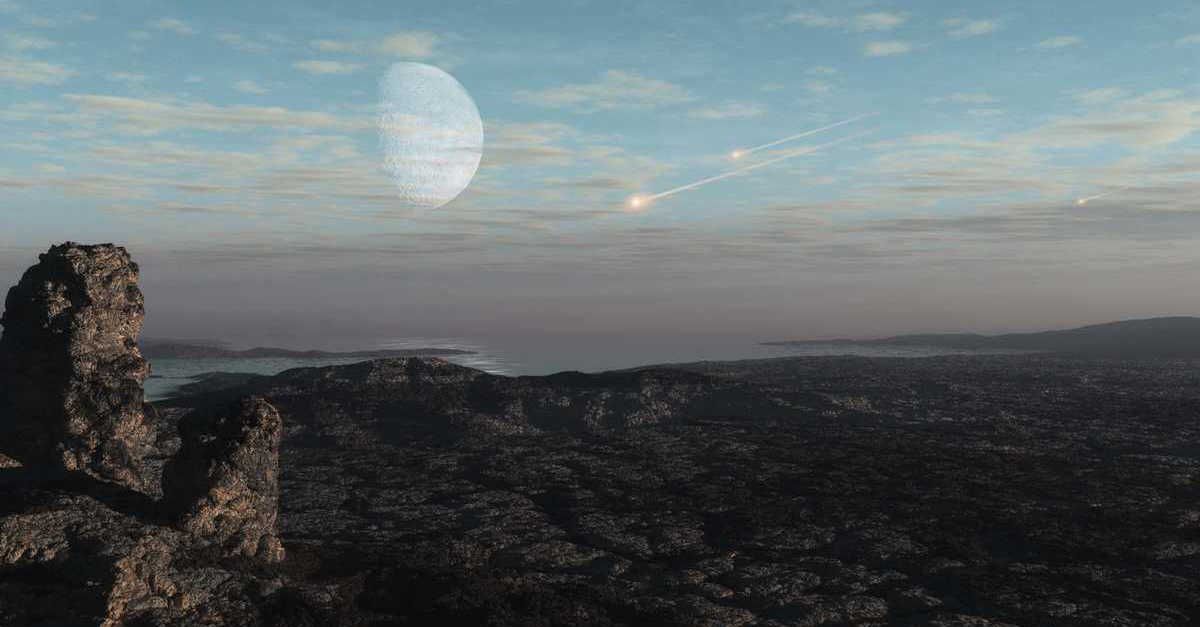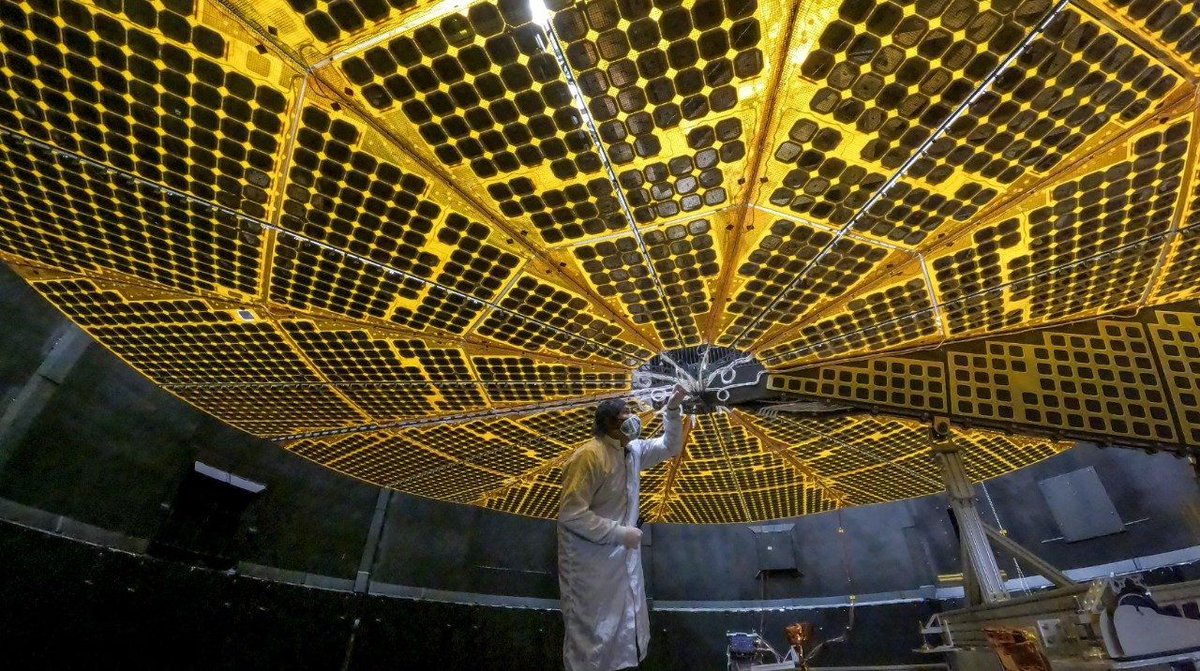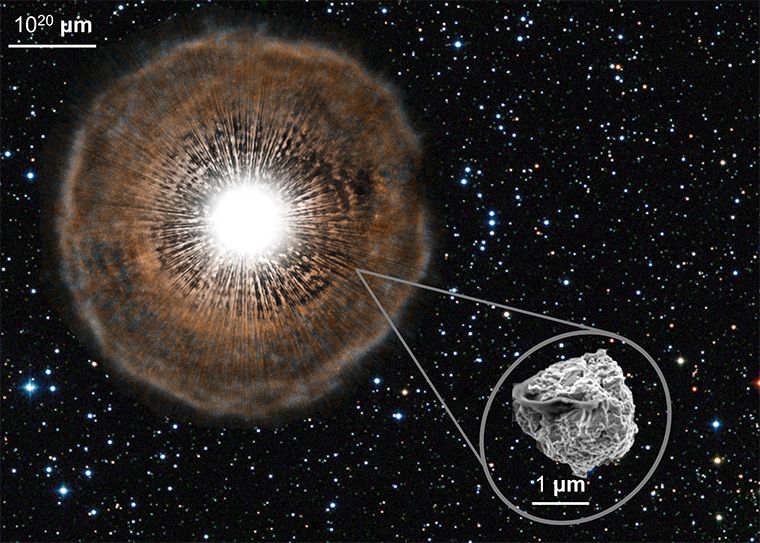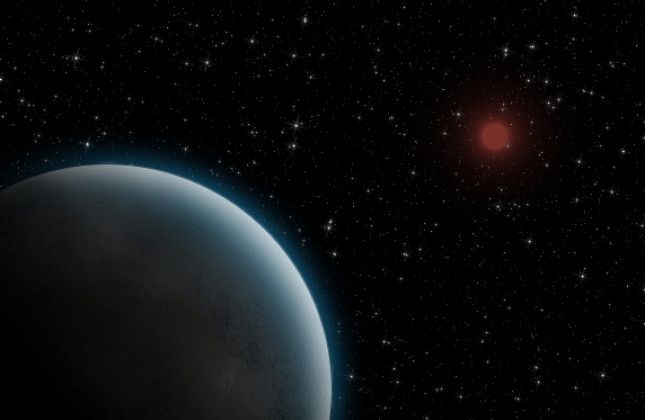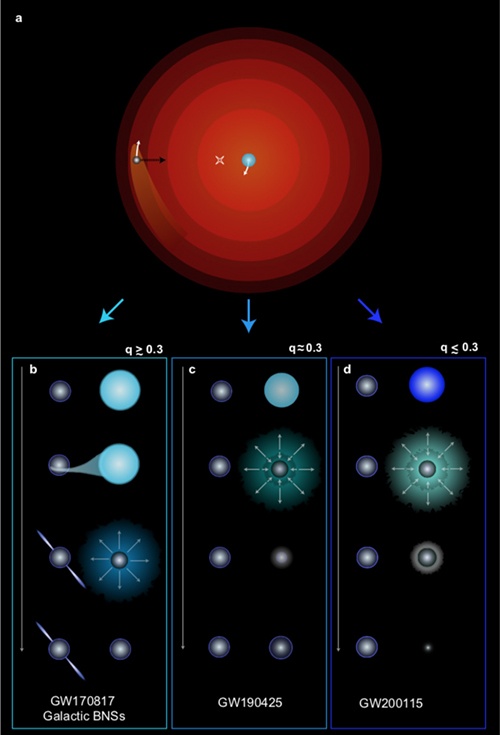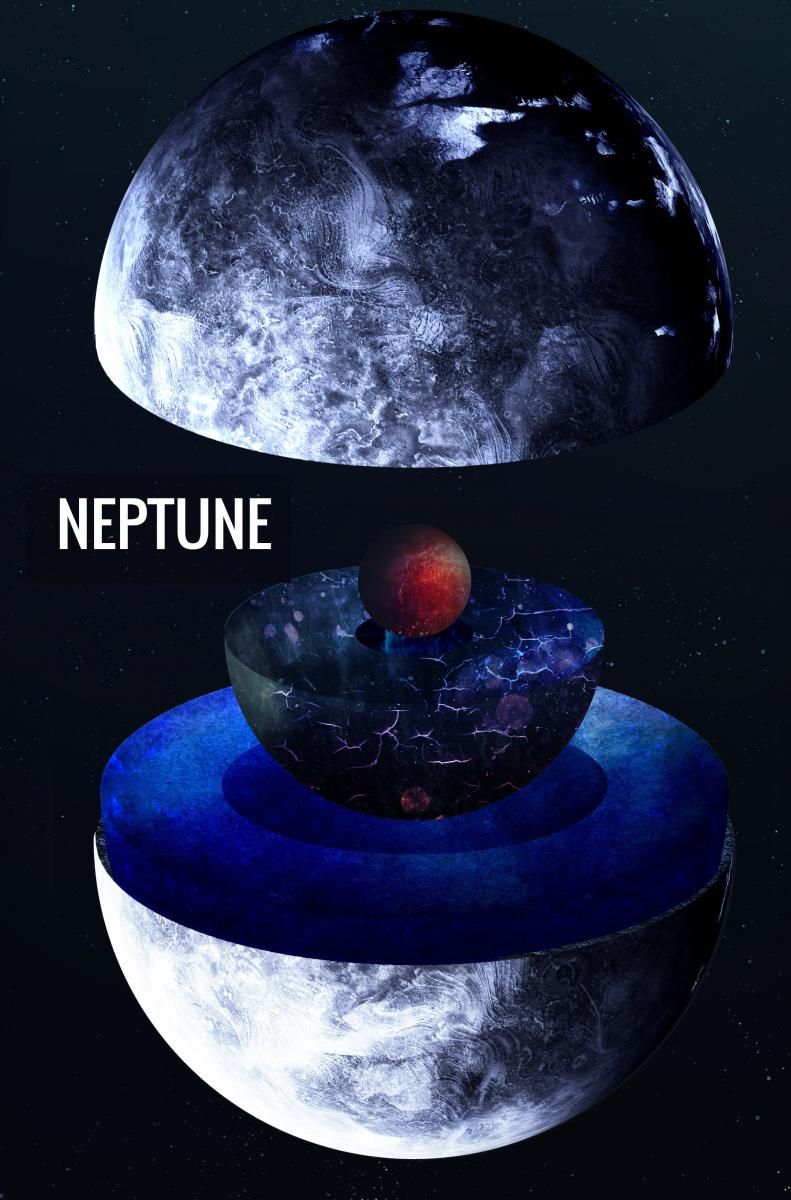Holograms are useful for more than interesting-looking baubles in gift shops. Materials scientists have used them for applications from stress/strain gauges to data storage systems. It turns out they would also be useful in making extraordinarily lightweight, flexible mirrors for space telescopes. A new study led by researchers at the Rensselear Polytechnic Institue shows how that might happen.
Continue reading “Lightweight, Flexible Lens Could be the Future of Space Telescopes”A Mars Colony Could be a Hydrogen Factory, Providing Propellant for the Inner Solar System
There are lots of potential uses for a Mars colony. It could be a research outpost, mining colony, or even a possible second home if something happens to go drastically wrong on our first one. But it could also be a potential source of what is sure to be one of the most valuable elements in the space economy – hydrogen.
Continue reading “A Mars Colony Could be a Hydrogen Factory, Providing Propellant for the Inner Solar System”Early Earth was Pummeled 10x More Than Previously Estimated
It’s no secret that Earth was bombarded with plenty of meteors for billions of years during the solar system’s early formation. Estimates vary on how much material impacted the planet, but it had a considerable effect on the planet’s atmosphere and the evolution of life. Now, a new study from a team led by researchers at the Southwest Research Institute puts the number at almost ten times the number of previously estimated impacts. That much of a difference could dramatically change how geologists and planetary scientists view the early Earth.
Continue reading “Early Earth was Pummeled 10x More Than Previously Estimated”A map of River Beds on Titan for Dragonfly to Explore
Explorers either have the benefit of having maps or the burden of creating them. Similarly, space explorers have been building maps as they go, using all available tools. Those tools might not always be up to the task, but at least something is better than nothing. Now, a new map of an exploration destination has emerged – a map of the river valleys of Titan.
Continue reading “A map of River Beds on Titan for Dragonfly to Explore”Uh oh, one of Lucy’s Solar Arrays Hasn’t Latched Properly
As we’re fond of saying here at UT, space exploration is hard. Many things can go wrong when launching thousands of kgs of highly engineered equipment that took years to develop into space. Now, something seems to have gone wrong with NASA’s latest Discovery mission. Lucy, launched successfully by a ULA rocket on October 16th, seems to have a solar panel that didn’t quite “latch.”
Continue reading “Uh oh, one of Lucy’s Solar Arrays Hasn’t Latched Properly”Meteorites Found With Little Pieces of Other Stars
When Carl Sagan said, “We are all made of star stuff,” he didn’t just mean we were made up of parts of our own star. Other stars contributed to the material that built our solar system, and some of that “presolar” material is still present in a pristine form inside meteorites. Now, a team led by Dr. Nan Liu at Washington University in St. Louis took a close look at some of the parts of meteorites that formed before the Sun. They held some exciting surprises and answers.
Continue reading “Meteorites Found With Little Pieces of Other Stars”With no Solid Surface, the Atmosphere of Jupiter Behaves Quite Differently Than Earth
Jupiter’s atmosphere has plenty of distinct features, including lightning and the Great Red Spot. But the underlying processes that drive these features are less well understood, as the physics of the gases that make up Jupiter’s atmosphere is complicated. A team of scientists from all over the globe has found a familiar process in all the chaos, though. They think a process that happens here on Earth might be happening on a grander scale at Jupiter.
Continue reading “With no Solid Surface, the Atmosphere of Jupiter Behaves Quite Differently Than Earth”Astronomers see a Moon-Forming Disk Around a Super-Jupiter
Recently, astronomers have been finding protoplanetary discs around certain stars. Their discovery has helped kick off a new work in planetary formation theory. But planets aren’t the objects that form from discs of material in space. Moons do too. Now, scientists led by Dr. Tomas Stolker of Leiden University and his team have delved deeper into the characteristics of a “protolunar” disc surrounding a “super Jupiter” exoplanet about 500 light-years away.
Continue reading “Astronomers see a Moon-Forming Disk Around a Super-Jupiter”Gravitational Waves Reveal Surprising Secrets About Neutron Stars
The confirmation of gravitational waves back in 2017 continues to unlock whole new worlds of physics but also continues to elicit further questions. The detection of each gravitational wave brings a new challenge – how to find out what caused the event. Sometimes that is harder than it sounds. Now a team led by Alejandro Vigna-Gomez of the University of Copenhagen thinks they found a model of star death that helps to explain some previously inexplicable findings – and points to a galaxy with many more massive neutron stars than previously thought.
Continue reading “Gravitational Waves Reveal Surprising Secrets About Neutron Stars”Why do Uranus and Neptune Have Magnetic Fields? Hot ice
The outer “ice giant” planets, Neptune and Uranus, have plenty of mysteries. One of the biggest is where exactly they got their magnetic fields. They are strong at that, with Neptune’s being twenty-seven times more powerful than Earth’s, while Uranus’ varies between ? and four times Earth’s strength. Chaos rules in these electromagnetic environments, making them exceptionally hard to both understand and model. Now a team of researchers led by Dr. Vitali Prakpenka of the University of Chicago thinks they might have found the underlying cause of both the field’s strength and its randomness – “hot ice.”
Continue reading “Why do Uranus and Neptune Have Magnetic Fields? Hot ice”
